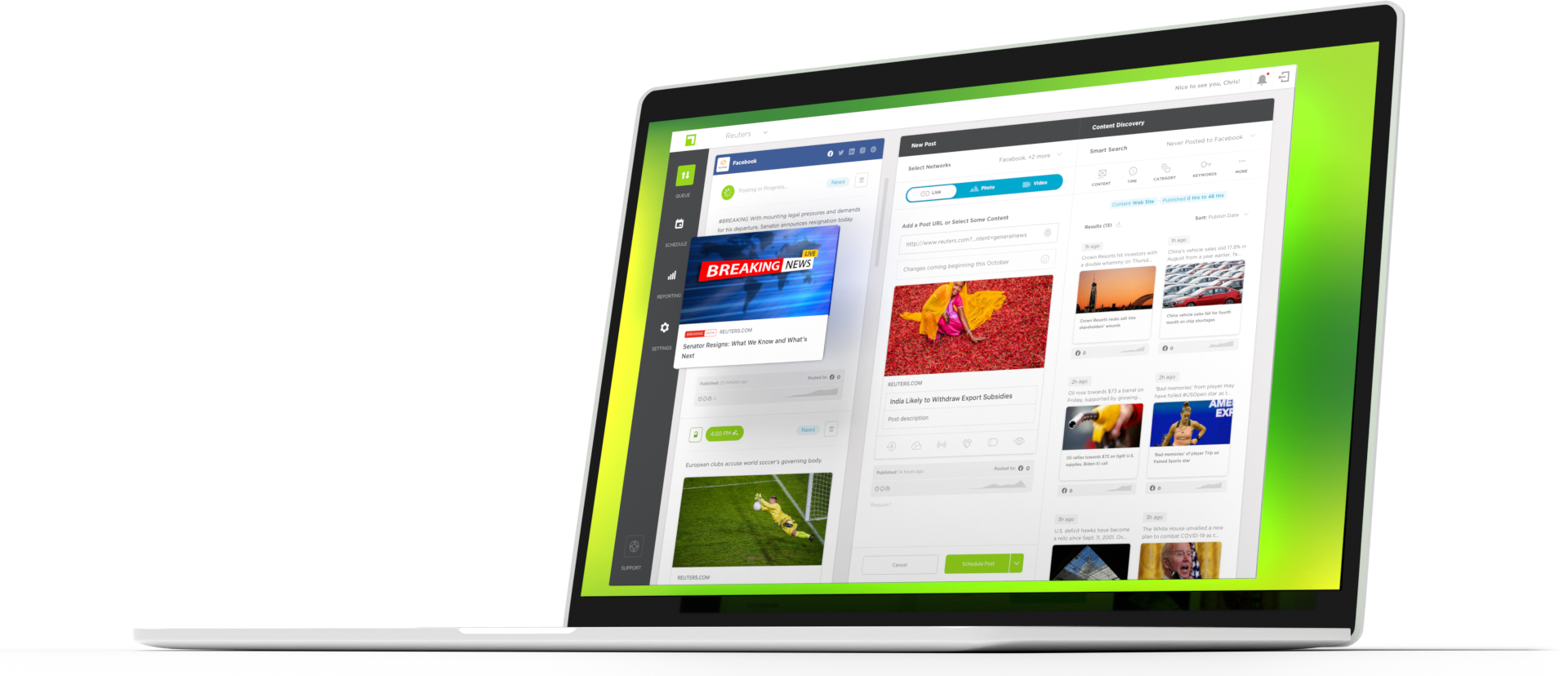Social media has reshaped journalism as we know it indefinitely. The newsroom was a different place before the digital age; however, the most significant shift by far has been the dawn of social media. From expanding reach to enabling real-time reporting, these platforms have created a new landscape that journalists and media teams have been pushed to accept.
Now, while social media has undoubtedly introduced numerous advantages to help journalists deliver their stories, it hasn’t come without challenges. We’ve seen the stress media teams are putting on themselves to keep up, primarily in terms of time and the amount of content needed to compete.
It’s crucial to understand both the importance of social media in journalism and the drawbacks to create a healthy and prosperous strategy for your team. Let’s take a closer look.
Benefits of social media journalism
24/7 News Cycle
Sharing news in real time in 2025 has never been easier. Social media is by far the fastest and easiest method of news publishing in the digital era. You can access anything from local headlines to worldwide topics, all within the span of a few seconds. Users spend an average of 4 trillion hours on social media each year. There’s no longer a timeline; publishers can post content at any time of day and still reach an audience that’s likely to find it.
Increased reach and engagement
With no time limits on publishing, the volume of content shared daily is insane. Social media provides publishers with an unlimited reach and audience–news travels farther and faster than ever. Granted, it can be tough to keep up with the constant flow of information, but higher reach means increased engagement. This boost in interaction provides publishers with valuable insights to help them create more valuable content and the ability to secure the loyal audience every media publisher seeks.
Expansion of news influencers
Anyone who establishes a platform and audience and has a smartphone can be a social media news reporter in 2025. You don’t have to work for a major publishing company, and so many of the most notable accounts on social media do not. The rise of news influencers has been significant as social media continues to grow, with users who have at least 100,000 followers focusing on current events and civic issues.
While the rise of influencers in the news was initially an adjustment, the shift encouraged publishers to take social platforms more seriously. It became undeniable that these users could be allies, helping journalists create deeper online relationships and beneficial collaborations.
Diverse topics and perspectives
Social media provides a platform for a diverse range of voices, ethnicities, political beliefs, religions, and more. Media publishers can tap into a host of ideas for news, breaking barriers that would have previously prevented the representation of marginalized groups. There’s far more transparency and inclusivity, and this is one of the keys to building a stronger online community.
Creation of niche news
Social media has streamlined the process of delivering targeted news. Never before has there been a space where the news can niche down so far. There’s no more flipping through sections of the paper or scrolling down pages and pages of online news to find something you like. Publishers can produce exactly what their audience is looking for on social media, every time, tailored precisely to what they want.
Burden for publishers and reporters
There’s no question that social media journalism has brought significant benefits, but it hasn’t been the most effortless transition.
- Increased content volume. Managing a 24/7 social media schedule is indeed a challenging task. Journalists and social media teams are researching, writing, shooting, editing, promoting, and scheduling content multiple times a day! The volume is intense enough, but keep in mind that all must be delivered with both quality and quantity in mind.
- Burnout. Social media burnout is a real phenomenon, and it’s becoming increasingly prevalent as social media continues to dominate the journalism landscape. Publishing teams are already working with small teams of individuals who are scattered and strained for time. Managing social media burnout is not something you typically consider when jumping on these platforms, but it’s essential.
- Toxic online behaviors. Criticism of journalists is not new, but social media has certainly made it easier and more widespread to target these individuals. Anyone who puts themselves out there to report the news online opens themselves up to criticism, online abuse, doxxing, and other toxic online behaviors. It’s a serious challenge that can take an emotional toll on journalists and their teams.
Balancing social media and news
As the publishing landscape continues to evolve, journalists and social teams must strike a balance between leveraging social platforms and protecting the integrity, accuracy, and sustainability of their work. Automating social media management is a good place to start and can take the bulk of the daily pressure off your team.
Are you curious about automating your social media management? Reach out to connect for more information, or request a demo to jump right in.

